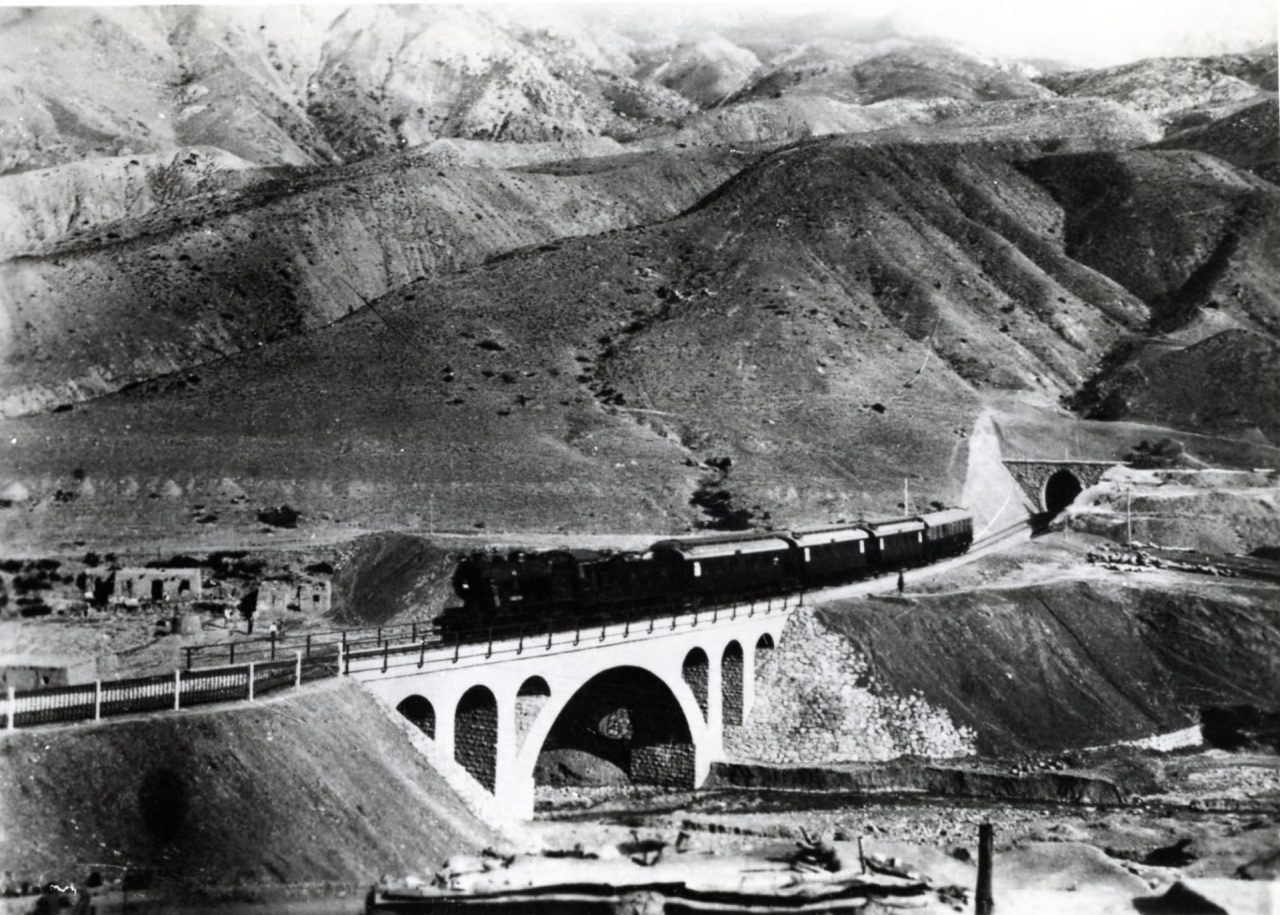The Trans-Iranian Railway, a visionary project that crosses the most varied and treacherous of terrains to unite the two coasts of the Islamic Republic of Iran, has joined the coveted list of UNESCO World Heritage sites – nearly 100 years after it was built.
The railway, whose addition to the list of cultural sites was announced by the United Nations Educational, Scientific and Cultural Organization (UNESCO) at its 44th session in July, has been an example of engineering prowess as well as nation-building ever since it began serving trains loaded with people and merchandise in 1938.
And in light of the fact that it has remained in operation up to this very day, the railway is considered a living museum. “The railways and associated structures and infrastructures such as bridges, viaducts, tunnels and stations were constructed with such a high quality material that (it retains) its authenticity and integrity after 9 decades (since) its establishment,” reads one of the documents supplied by the Iranian Cultural Heritage, Handicrafts and Tourism Organization of the Iranian government in its application to be put on the UNESCO list.
The Trans-Iranian Railway: an incredible dream
Stretching some 1,400 kilometres with a standard track gauge 1435 mm, the railway runs between the northeastern port of Bandar-e Torkaman on the Caspian Sea and the southwestern port of Bandar-e Imam Khomeini on the Gulf to the south. It has the capital, Tehran, at its hub.
Curiously, the railway passes near two other UNESCO sites: the hydraulic system in Shushtar that dates back to the 5th century, B.C., and the ruins of the holy city of the Kingdom of Elam founded circa 1,250 B.C.
A legacy of Reza Shah, it was the first railway to unite the country. Although Iran, known as Persia at the time of his reign, already had a few hundred kilometres of rail lines, they were insufficient to support the modernisation of this vast land in desperate need of more transport links. So the Shah had the first plans drafted in 1925 shortly after coming to power. Construction began two years later, and, after 11 years of arduous work, the railway was complete.
“The concept of … connecting two seas …crossing through the country and through the mountainous, forest, desert, and coastal regions, was an incredible dream,” read Iran’s application.
UNESCO agreed, saying in a brief statement announcing the railway as a World Heritage site that it “is notable for its scale and the engineering works it required to overcome steep routes and other difficulties.”

A bold undertaking
The project, as costly as it was bold, was partly financed by taxes, such as those on tea and sugar imposed by the Shah.
And bold it was: the builders faced malarial marshes, two mountain ranges, immense plateaux, deep valleys, scorching deserts and vast lowlands – conditions that tested the ingenuity, resourcefulness (let alone resilience) of the best of them.
Cable news network CNN said in a feature on the railway recently posted on its website that the terrain in some parts was so difficult that the direction of the planned route had to be repeatedly revised. “Some tunnels had to be abandoned during construction after salt and gypsum deposits were found, forcing new routes to be located, while another tunnel through volcanic pumice could be neither blasted nor dug out with picks and shovels.”
It eventually resulted in the construction of 174 large bridges, 186 small bridges and 224 tunnels, including 11 spiral tunnels.
Five lots for Impresit
The enormous task involved 43 contractors from many countries, including Impresit, a Webuild predecessor, from Italy. Since no single contractor had the capability of accomplishing the entire project, the work was divided into sections, known as lots. Impresit acquired five of the most challenging.
“The lots conferred to Impresit were among the most difficult to execute,” says Andrea Filippo Saba, a University of Florence researcher, in a 1995 academic paper. Four of the lots were in the north where Impresit had to build an access ramp to a tunnel under the Gaduk Pass in the Alborz mountain range. It climbs 1,200 metres in less than 50 kilometres. With an average gradient of 26%, it rises from 1,000 metres above sea level to 2,200 metres. At one point, it zigzags three times up the side of a mountain.
Another challenge was the construction of a bridge across a narrow valley to allow the train to exit a tunnel from the side of one mountain and enter a tunnel in the adjacent mountain. In order to build the arch of the bridge 70 metres above the river valley, the builders had to erect two iron platforms supported by slats or meshes of fortified concrete. At another site along the side of a mountain, they set up makeshift cable cars to import the sand required to make cement. Winters were merciless, sometimes dumping two metres of snow.
Impresit’s fifth lot was in the south, where the railway was to wind its way through the mountainous province of Khuzestan. The remoteness of the location made it difficult to maintain supply lines. In summer, temperatures reached such scorching levels that work was conducted at night. Apart from the dozen engineers, 20 administrative officers and 80 technicians, there were 12,000 locals – all working uninterruptedly for 26 months.
In the end, Impresit built about 50 kilometres of railway, including 73 tunnels and 2,000 metres of bridges and viaducts.

